Analysis of blood parasites of a mandatory procedure for all who work in the health care, educational institutions, animals or plan to attend the educational institutions. Unlike the studies of the cove, the modern analysis of blood helminths provide more accurate results, allowing to evaluate the degree of invasion and tracking of the effectiveness of the treatment. Surveys are made of this type quickly and do not require much time of decryption.
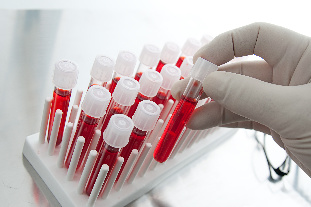
When and who needs the blood test in helminths?
The sad health statistics indicates that approximately one out of every 3 people with the problem of helminths today is the current. Of transport aircraft, offices and schools, and unwashed fruits and vegetables, a handshake — all of these common for each adult and a child business, and become the main source of infection by parasites. Even if the symptoms do not manifest immediately, in any case, parasites have a negative impact on the human body: causes a deterioration in the appetite, contribute to the development of allergies, pains in the body damaged, bad digestion, are sometimes able to cause death. Taking this into account, it is necessary to give to parasites analysis of each person (preferably every year).
You can't pull with the study, if they do not manifest specific to helmintiasisa symptoms:
- it is a strong weight loss;
- the hives;
- frequent nausea;
- aversion to food;
- the drastic drop in hemoglobin;
- irritability or insomnia in children.
In addition, you can also called a group of people, that necessarily every 6-8 months to check the blood. Thus, in particular, are:
- the people who live in areas with frequent outbreaks of helmintiasisa;
- those who work in educational institutions and have to deal with young children;
- health care workers;
- all the workers of the restoration;
- the people who work with animals, as well as members of their families (veterinarians, workers of the flesh, the shepherds, the farmers, the workers of the circus, zoo, etc).
In addition, an analysis of blood worms should be given to all children of school and preschool age, which in the near future must attend the school, cups. Explore the blood in the parasites should be pregnant women, children on the eve of the vaccination. In addition, the repetition of the analysis it is worth to take after the course of treatment of the parasites.
The elisa test as one of the most effective methods of diagnosis
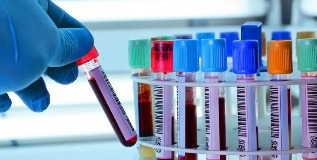
The most popular and reliable analysis of today, the experts call test immunoadsorption enzyme of the blood in parasites. The main objective of this high-precision laboratory, the method of identifying in the blood of antibodies to one or another type of parasites. Immunoglobulins (called antibodies) are the natural response of the immune system, and have the aim of neutralizing the negative of the agent.
To establish an accurate diagnosis, and find out what intensity passes the disease of parasites, how long it lasts, the specialists can use 3 different types of immunoglobulins:
- Class. are Detected in the blood of a child or of an adult of approximately 2 to 4 weeks from the time of infection. Almost 80 % of them shows up in the mucous membranes, and only 20 % stays in the blood. After treatment with immunoglobulins of the class And can be more than a month. If the analysis of parasites in its new detect, means it has passed the disease in a chronic form.
- The class Square More quickly respond to the presence of the parasite. In the blood was detected already 5 days from the moment of infection. However, it does not last for a long time — up to 2 months, and then gradually disappear. Thanks to this indicator, the doctor can come to the conclusion about the existence of an acute helmintiasisa at a particular time.
- Class G. Appear relatively late — after 1 month after the worm invasion. However, it shows that last more than six months. Used to understand how much time a person suffers helmintiasisom.
In comparison with other laboratory methods, the elisa test has a number of advantages, in particular:
- high precision;
- the ability to determine the stage of the disease;
- versatility;
- the possibility of use for the mass of the population survey;
- appropriate adult and the child.
Test immunoadsorption enzyme it is convenient to use for identification of these species helmintiasisa, such as:
- giardiasis;
- trihinellez;
- leishmaniasis;
- the ascariasis;
- cysticercosis;
- opisthorchiasis;
- echinococcosis and others.
The Sunday exploration for the detection of the parasite
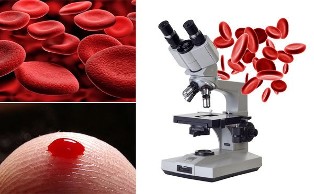
Sunday scan — one of the most modern analysis of parasites in children and in adults. With your help we can identify the following:
- a particular type of parasite;
- the structure and the amount of white blood cells;
- the number of red blood cells;
- the degree of viscosity of the blood;
- the state of the immune system;
- the presence of fungi and viruses.
Unlike the elisa tests, the Sunday scan provides for the extraction of a few drops of blood from the finger. The liquid is placed in a sterile glass, and then carefully examined under the microscope. The number of increases reaches 1800-2000 time. It is not at all necessary any additional processing (the use of enzymes, dyes, drainage, etc). In modern hospitals, the picture appears on the monitor, but because the patient has the opportunity to observe the process of the research, check for the presence of fungi, and helminthes. Shocking may be the image of the larvae of the parasites. If necessary, are made in the photograph or the video recording of the research is conducted.
This method-express, as the information on your state of health, the patient can know through 10-15 minutes.
It is worth noting that as a method of detection of the parasite Sunday, scan had not in fact used. The thing is that in the human body can accommodate different types of parasites, with different place of location. Not in all cases results in the migration of the larvae in the blood. You may suspect the presence of helminths allows the decrease of the number of red blood cells (as well as some parasites feed on blood and nutrients), increases the number of white blood cells (specified in the body fight with a parasite), the dense plasma.
Other methods of diagnosis
If with method 1 to identify helminths can't, the doctor recommends complementary laboratory:
- Serologic analysis. It also refers to the immunological options, such as the elisa test. However, unlike the latter, the first has the objective of exploring the blood and the serum. To get the information that the physician should use the reaction between antibodies and antigens. Serological analysis is not met for all species of helminths, and the fact that the doctor suspected. If the body of man is that of a parasite, the specialist will notice a clear answer.
- Pcr-diagnosis. Does not give the possibility to find out the stage of development of worm invasion, and is not recommended for fixation of all types of parasites. With it, you can know if they are present in the human body simple helminths. The main task of laboratory assistant in this case — to look for the rna and dna of the parasite. If this does not play any role, it will be the parasite, dead or alive. Give the study have the possibility of any material, in particular, urine, blood, or stool. To improve confidence in this type of analysis could give up several times.
- Vegetative resonance test. The method is based on the identification of the resonance between the human organism and the drug. In the last act of information carriers of different species of helminths. All the frequency data of each type of parasites have been confirmed and scientists are still in 1989, the techniques of assisted reproduction (as it is called by this method) is carried out in laboratory conditions, and gives you the opportunity to identify in what state the immune system of the person in a certain period of time. So, with the help of assisted reproduction techniques doctor can find out if you suffer from the body of the allergy, if there is in him toxic, bacterial, parasitic effect or not.
- A detailed analysis of the blood. The overvaluation or, on the contrary, too low levels of hemoglobin, has reduced the number of red blood cells, the increase in the number of eosinophils are the main characteristics that allow to suspect the presence of a parasite in the human body.
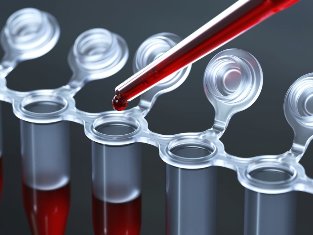
How to prepare for the research, and how to decipher the results?
Characteristics of the test directly depends on the type of method it is necessary to use, and the existence of species of parasites suspect. As a general rule, the extraction of blood is done in vienna, and in some cases (the Sunday scan) of the toes. Just 10-15 ml of blood to establish the diagnosis.
To obtain the maximum of reliable information, it is necessary to observe certain rules for the delivery of clinical analysis:
- On the eve of the day of the blood draw, the patient should not consume too much salty, fatty food (because you can change the level of white blood cells); the foods that can cause allergies — honey, citrus fruits (increase the level of eosinophils, which also takes place when helmintiasise); foods rich in essential oils — garlic, onion, ginger (influence on the activity of the parasites).
- It is better to rent the material on an empty stomach. It allows in a small amount of clean water.
- You must inform your doctor about medications that have been used for the past 2 weeks.
- It is not recommended a few days prior to the delivery of the analysis of use any physiotherapy procedures (including chest x-rays, ultrasounds, x-rays).
- At least a week before the extraction of blood to forgo the alcoholic drinks and medicines which contain the large concentration of ethyl alcohol.
- Smoking it is necessary to leave at least 2 hours before you take the test.
If the strong helmintiasisom, suffered a pregnant woman, a study that is required and of the newborn. You have the blood extracted from the umbilical cord or the placenta.
In the execution of the research, as a general rule, the lack of 2-3 days. A little more time (up to 5 days) will have to spend in the event that if you are running the package immunoassays of the research on the different types of parasites.
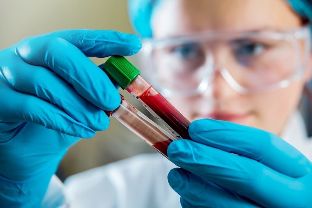
The decoding should only deal with a specialist. The most easy to interpret is still the Sunday scanning, and pcr-diagnosis. They discover that the parasites or their larvae or not.
The more difficult the situation with the method, that should be the elisa test. The doctor is obliged to take into account immunoglobulins 3 groups. As well, a severe form of the disease can be counted, if there is a combination of: immunoglobulin of the M class positive, while the A-class or G can be positive or negative. Chronic data: immunoglobulin of the M class are to the class A and G may be positive or negative.
In the event that any of the above mentioned analysis showed a positive result, you throw with the treatment helmintiasisa not worth. After a full, designated by the treating physician, it is necessary to return to the delivery of the analysis, however, this must be done after approximately 2-3 months after receipt of the medications. Not knowing what analysis should be given, it is best to consult a doctor-therapist, gastroenterologist, or other professionals.



































